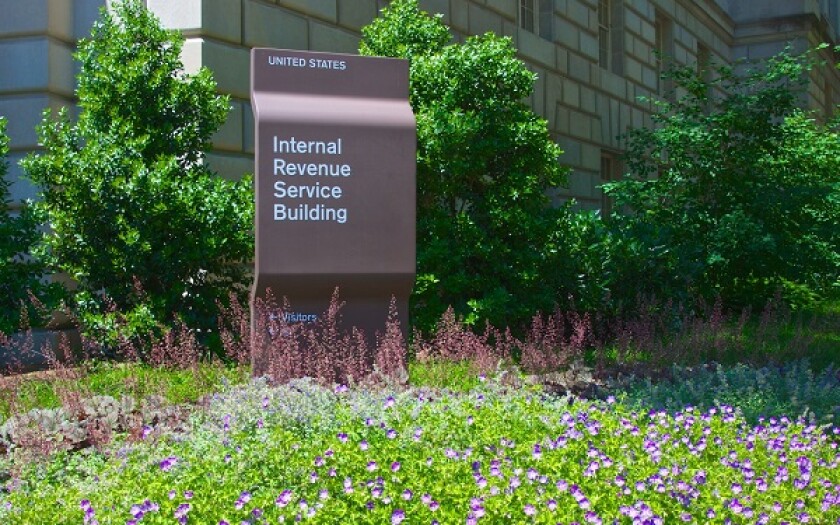US taxpayers must include a proposed draft APA in their request for an APA under Rev. Proc. 2015-41. Taxpayers with pending APA requests should contact their assigned APMA team leader for guidance on whether to use the new template in their existing cases.
An APA is an agreement that sets out the terms agreed to between the IRS and the US taxpayer in a unilateral APA, or between the IRS and foreign tax authorities in a bilateral/multilateral APA, including the best method for determining arm’s-length prices of the “covered issues” under IRS section 482 and any other Internal Revenue Code sections identified in the APA, the Treasury regulations thereunder, and any applicable tax treaties.
The new APA template from May 11 replaces the Advance Pricing and Mutual Agreement’s (APMA) current model APA, which had not been substantially updated since 2004. The new APA template contains only minor changes from the draft APA template that APMA released for public comment on September 19 2017.
In addition to the new APA template, APMA also issued:
A filled-in sample APA, supplemented by additional comments;
A redlined APA template comparing the new template to the September 2017 draft template; and
An explanation regarding the public comments received on the draft APA template and changes made by APMA to the draft template.
As noted, the new APA template contains only minor changes from the draft. The explanation issued by APMA responds to a number of the comments raised and provides explanations as to why changes were not made to address certain concerns. The explanation also states that APMA envisions reviewing the template periodically and making further revisions as it gains experience in the template’s use.
The APA template incorporates new changes in the APA process and conforms to language contained in the 2015 revenue procedure. The new template presents a menu of options for selection by US taxpayers, covering a wide range of situations, intended to minimise the need for custom drafting and negotiation over the text of the APA. The new APA template notes that it is intended to:
Systematise how taxpayers propose terms for their APAs;
Standardise language used in executed APAs;
Improve efficiency in the APA process;
Enhance consistency in the administration of the APA programme; and
Minimise editing by using an options-based format for selecting from terms presented in certain sections of the model APA.
Key changes
Limitation on assistance
Consistent with language in section 2.02(4) of Rev. Proc. 2015-41 and section 7.02 of Rev. Proc. 2015-40, the new APA template specifically includes an acknowledgment by the US taxpayer that if the covered issue(s) relate to one or more countries that have a tax treaty with the IRS but are not a party to the mutual agreement implemented by the APA, the IRS may decline to provide competent authority assistance if the foreign tax authority proposes an adjustment relating to the covered issue(s). For example, in the event of a foreign-initiated transfer pricing adjustment covered by a unilateral APA, the IRS may not provide competent authority assistance.
The language in the new APA template is consistent with the language contained in the draft APA template, and while also consistent with the 2015 APA and MAP revenue procedures, this practice is a departure from the prior revenue procedures.
While APMA did not modify the limitation on assistance language in finalising the APA template, the new APA template does attempt to partially address a number of concerns raised in the comments received by APMA by stating that “the provision titled Limitation on Assistance at the end of the recitals might be modified based on an understanding reached in the prefiling stage of the APA process.”
US taxpayers may need to exercise caution about entering into unilateral APAs with the IRS when the covered issue(s) could have been covered by a bilateral APA, and in such cases, should try to obtain an explicit assurance from the IRS APMA team in the prefiling stage for a unilateral APA, that in the event of a foreign-initiated adjustment covered by the unilateral APA, the IRS would agree not to reject its competent authority request. Based on the wording in the new APA template, it appears that APMA would be willing to consider this request, depending on the taxpayer’s specific facts and circumstances.
Conforming adjustments and repatriation of funds
If a primary transfer pricing adjustment arises as a result of an APA, Rev. Proc. 99-32 governs the repatriation of funds to conform the accounts, unless competent authority repatriation is requested and agreed to pursuant to Rev. Proc. 2015-41. The executed APA sets out the terms of any repatriation of funds required as a result of an APA primary adjustment. Typically, in a bilateral APA context, the US taxpayer is permitted to establish an account receivable or payable to its related foreign entity in the amount of the APA primary adjustment. That account typically will not bear interest and must be paid within 90 days of the later of the date for timely filing the federal income tax return (including extensions) for the taxable year to which the APA primary adjustment relates to or the APA’s effective date. If any amount of the accounts payable is not paid within the 90-day period, the US taxpayer would face the federal income tax consequences of the secondary adjustments (deemed distribution or capital contribution).
In describing the accounts payable to be established, the draft APA template stated in Appendix A: section 6 (Conforming Adjustments and Repatriation of Funds): “This payable will be treated as indebtedness for all US federal tax purposes, including, but not limited to, Code section 956.”
In the explanation to the new APA template, APMA states that it received numerous comments criticising the inclusion of this language, but that the IRS continues to believe its position is correct on legal and policy grounds. However, APMA has made a de minimis exception, whereby the inter-company payable will not be treated as indebtedness for purposes of Internal Revenue Code section 956 if the payable is satisfied within 90 days of the close of the APA tax year with respect to which it is established. Taxpayers should review the potential implications of this provision to their facts, and work with their advisor to try to mitigate the potential impact.
Format of APA
Consistent with the draft APA template, the new APA template presents a menu of options for selection by US taxpayers, covering a wide range of situations, with the intention of minimising the need for custom drafting and negotiation over the text of the APA.
In response to comments received, APMA clarified and further emphasised that the template might be edited by taxpayers, and explained that custom drafting might be required even when not specifically indicated in the template. In addition, when taxpayers propose custom text, they are now required to specifically provide justification for the inclusion in the APA request, just as selecting an option with an asterisk requires justification.
Flagged options Certain options in the new APA template are flagged with an asterisk after the square brackets. Taxpayers that select flagged options are required to provide a justification for the selection in the APA request. For example, if a US taxpayer proposes that if an adjustment is required, such adjustment would be made to the nearest edge of the arm’s-length range and not the median, the US taxpayer would now be required to include a justification for this proposal in the APA request.
Periodic adjustments
The new APA template at section 4.e of Appendix A includes two welcome optional provisions regarding periodic adjustments, as contemplated in section 6.03 of Rev. Proc. 2015-41.
One provision provides that a covered platform contribution transaction (PCT) will not be treated as a trigger PCT for purposes of making periodic adjustments under section 1.482-7(i)(6) of the Treasury Regulations.
The other provision similarly provides that a covered intangible transaction (other than a PCT) will be not be subject to periodic adjustments under section 1.482-4(f)(2) or (6) of the Treasury regulations.
Critical assumptions
Appendix B of the new APA template revises the standard critical assumptions contained in the previous model APA. The new APA template splits the prior critical assumptions into two separate sets of critical assumptions, and expands the current wording to state that “the covered entities’….contractual terms, markets, and economic conditions faced in relation to the covered issue(s) will remain materially the same as described in the APA request.”
Appendix B also provides that the action of the covered entities will not cause a critical assumption to fail for the purpose of rendering the APA ineffective, unless they have an independent business justification for such action. If one or more of the covered entities do cause a critical assumption to fail for the purpose of rendering the APA ineffective, then the covered entities will not withhold consent to an amendment to this APA to the effect that the APA will continue in force without regard to such failure. In that case, if a covered entity refuses to sign such an amendment, an amendment may be executed without signature and will then have the same force and effect as if the amendment had the signature. It is unclear why APMA believes this explicit provision is required.
APA annual report
Section 6.e. of the new APA template provides clarification that US taxpayers can combine annual reports for multiple APA tax years, provided that all required information for each APA tax year is clearly presented. This is consistent with common practice now for US taxpayers, and the specific acknowledgement in the new APA template is appreciated.
Appendix C of the new APA template sets out the information required to be contained in the APA annual report, which, in general, includes more specific requirements for US taxpayers than the previous model APA. For example, US taxpayers would be required to provide more specific information in relation to APA primary adjustments, and detailed numerical explanations of how the results of the application of the covered methods is reflected on the US return, with reference to particular line items on the US return. The new APA template provides that US taxpayers cannot simply attach a copy of the Schedule M-1 or M-3 and must include the amounts, description, reason for, and financial analysis of any relevant book-tax differences, as reflected on Schedule M-1 or M-3 of the US return. The new APA template also sets out more specific requirements for the financial analysis that US taxpayers must provide to show their calculations to apply the covered method(s) to the covered issue(s) for that APA covered year. In addition, the new APA template includes the additional critical assumption language noted above, and would require the US taxpayer to also identify material differences between the covered entities’ contractual terms, markets, and economic conditions.
Other notable provisions
Unlike the previous model APA, the new APA template includes specific provisions to address what would occur if an APA is terminated early.
The new APA template also includes an option to increase an APA primary adjustment based on the time value of money if the APA primary adjustment is telescoped into a subsequent year.
In the event of a dispute concerning the interpretation or application of the APA, the new APA template notes that the parties will seek a resolution by the director of the IRS’s Treaty and Transfer Pricing Operations. Under APMA’s previous model APA, this person was the director of APMA. It is expected that US taxpayers would continue to approach the APMA director in the first instance to discuss potential issues.
Consistent with the draft APA template, the new APA template uses the term “Tested Party” in a more expansive sense than is used in the OECD transfer pricing guidelines and Treasury regulations. To avoid confusion, the new APA template repeats in section 4 of Appendix A the explanation of the sense in which “Tested Party” is used.

|
Kirsti Longley |
|

|
Dave Varley |










